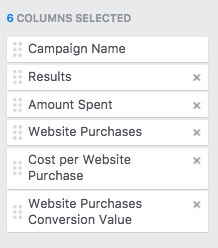
For this new year let’s see how to plan an SEO content strategy to rank higher in the SERPs! SEO is more crucial than ever this year, so let’s get pumped and improve your SEO strategy with a sparkling new SEO campaign! In this post, I’ll tell you just how to set up a successful content SEO content strategy campaign and quickly improve your chances to outrank your competition in the search engines!
Step 1: Assess your current (technical) SEO fitness
The first order of business is to improve the technical SEO of your website. Just like getting back to the gym you need to start with doing an assessment by getting an SEO audit of your website.
Use a few tools like SEMrush, Google PageSpeed Insights to get a complete view of your content, your site speed and see how your backlinks are doing. Other technical aspects like 404 pages, back links and toxic links should be fixed.
Taking care of the technical aspects of your website before starting an SEO content strategy with new and improved content, you will be good to go!
Step 2: Determine your most important pages
In order to drive more traffic to your site, you need to know what aspects of your website should be optimized the most.
Which improvements would increase the chances to rank in the search engines the most? In order to answer these questions, you should determine the most important pages of your website.
Determining the most important pages on your website can be rather simple with the right tools.
But first ask yourself; which pages solve the most problems for new customers? Which pages are closest to my mission?
Compare the answers to these questions with the results of your analytics: which pages currently have the most traffic? Which pages have the highest conversion rates? And which pages have the most shares?
You should end up with a list of pages that give you these results.
The content on these pages should be improved upon further.
And, the pages that don’t have much traffic, should not be forgotten either. These pages are useful to learn from.
I use MonsterInsights which gives me instant traffic results right from my WordPress dashboard without leaving the site.
Step 3: Keyword research
You need to know exactly what your audience is searching for. And the search terms they are using. You need to know the keywords they’re using when they perform a search query in Google.
Keyword research means getting inside the heads of your audience and making sure you are focusing on the search ‘intent’ of your potential customer. If you offer a product or service, people might not be looking for your product or words that relate to the product. They might be searching for the problem your product or service is solving.
Get feedback from your audience to make sure you’re targeting the correct search terms. And use tools like Google Trends or Answer the Public, in order to make sure you’re focusing on the right search terms.
SEMrush can help you wind up with a list of keywords you wish to rank for. It can also tell you which search terms your competitors are using that are driving traffic to their sites.
See which keywords you’re already ranking for. Divide the list of keywords you’re not ranking for yet and the ones you wish to rank for. You’re probably already ranking for some of them.
Make a side-by-side list to compare.
Step 4: Setting realistic goals for your SEO campaign
It’s important to remember that you won’t start ranking for the most competitive keywords overnight. If you’re in a competitive niche, it will be hard to rank for certain keywords. You’ll need to focus on more specific and less competitive keywords in order to stand a chance of ranking.
Take into account the traffic potential (how many people search for a certain keyword) and the ranking potential (how many of your competitors are already ranking for that term).
Read more about how to determine a realistic keyword that will help you rank higher or check out helpful keyword research training with Semrush.
Adapt your list of keywords according to the best chances you have to start ranking or improve your rankings. You should start with keywords for which you have a good chance to outperform your competitors.
Step 5: Match content to keywords
Evaluate your SEO content based on the list of keywords you have selected.
Does your current content match the keywords? Did you write articles that were optimized for the right terms?
Determine which keywords do not have a post or page yet. Determine which articles need to be re-purposed, tossed, or written from scratch.
It could well be that you already have content that is optimized for the right keywords, but that is not ranking as well as it should.
Make sure to check out whether or not your website is suffering from keyword cannibalization.
Keyword cannibalization occurs when you have too many identical or similar keywords spread throughout the content on your website. As a result, a search engine like Google can’t discern which content to rank higher. This means that sometimes it will give a higher ranking to the web page you don’t mean to prioritize.
If you have been writing about similar topics, chances are rather high that you are in fact lowering your chances to rank for a certain keyword, because you’re competing with your own content.
If this is the case, you should use the rel=canonical tag to determine which page is the original content you wish Google to crawl and improve your internal linking strategy (more on that in step 7) or tell Google not to crawl certain pages by creating a no-index tag. Learn more about this in my course below.
You should end up with a list of articles that need rewriting and re-optimization and a list of articles that you can create content for in the future.
Step 6: SEO Content Strategy – (Re)Write content!
Write the articles and rewrite the articles that need to be improved upon. One way to do this is with the useful feedback you get from the state-of-the-art content analysis in a SEMrush content audit.
This SEO content analysis helps you improve the readability and ranking of your text, helping you write fresh and natural content that your users and search engines will love.
Make sure to start with the articles that have the highest chance of improving your rankings.
Develop a well thought out social media strategy and calendar where you share your articles with your audiences on Facebook, Twitter, Instagram, LinkedIn or Pinterest.
Remember, you don’t have to be on all platforms at once. Determine through your analytics which social platforms serve you the best.
Step 7: Improve the internal linking on your website
As websites get more content, internal linking becomes more and more important.
Your internal links are very important to Google crawlers. Google follows these links, so depending on how you create internal links will give Google important clues about which content is the most important.
Especially if you have a large amount of content on your site, make sure to take some time to improve the internal linking structure of your site.
Make sure that your most important articles have the most internal links pointing towards them.
Step 8: SEO Content Strategy Success
A successful SEO content strategy is an ongoing process.
SEO is an ongoing process of trial and error, creating high quality content, measuring the success and then making necessary changes to your SEO campaign.
Your website will always change and grow, Google’s algorithms and updates are always changing and growing, and your audience will morph as well.
However, your chances to outrank your competition will most definitely be higher than, because of all the positive SEO efforts you’ve made!
Digital & Social Articles on Business 2 Community
(24)
Report Post








